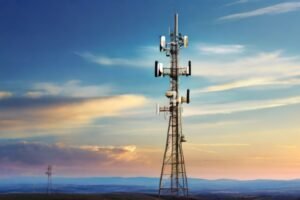Cell Towers in Your Area
In Our Modern World, Cell Towers Have Become Ubiquitous, Enabling The Seamless Connectivity We Rely On For Communication And Data Access. However, As These Towers Proliferate In Residential Areas And Urban Landscapes, Concerns About Their Safety And Potential Health Risks Have Emerged. In This Comprehensive Guide, We’ll Explore The Safety Considerations Surrounding Cell Towers, The Potential Disadvantages Of Living Near Them, Ways To Mitigate Exposure To Radiation, And Steps To Address Community Concerns.
Is It Safe To Be Near A Cell Tower?
Cell Towers Emit Radiofrequency (RF) Radiation As Part Of The Wireless Communication Process. The Levels Of RF Radiation Emitted By Cell Towers Are Regulated And Generally Considered Safe For Human Exposure According To Guidelines Established By Regulatory Bodies Like The Federal Communications Commission (FCC). However, Some Individuals May Have Concerns About Potential Long-Term Health Effects Associated With Prolonged Exposure To RF Radiation.
How Far Away From A Cell Site Tower Is Safe?
While There Are No Specific Distance Guidelines Universally Recognized As Safe, Maintaining A Reasonable Distance From Cell Towers Can Help Minimize Exposure To RF Radiation. Typically, Being A Few Hundred Feet Away From A Cell Tower Can Significantly Reduce Exposure Levels. However, It’s Essential To Note That RF Radiation Diminishes Rapidly With Distance, And Modern Cell Tower Designs Incorporate Safety Features To Limit Exposure To Nearby Residents.
What Are The Disadvantages Of Living Near A Cell Tower?
Living In Close Proximity To A Cell Tower May Present Some Potential Disadvantages. These Can Include Aesthetic Concerns About The Appearance Of The Tower, Perceived Decreases In Property Values, And Psychological Stress Related To Fears About Health Risks. Additionally, Some Individuals May Experience Electromagnetic Hypersensitivity (EHS), Characterized By Symptoms Like Headaches, Fatigue, And Insomnia, Although Scientific Consensus On This Condition Remains Limited.
How Do I Check My Cell Phone Tower Radiation?
Measuring RF Radiation From Cell Towers Typically Requires Specialized Equipment And Expertise. While Consumer-Grade RF Meters Are Available, Interpreting The Results Accurately May Be Challenging Without Professional Guidance. Local Government Agencies Or Independent Consultants May Offer RF Radiation Assessment Services To Provide Residents With Accurate Information About Exposure Levels Near Cell Towers.
How Do I Remove A Mobile Tower From My Residential Area?
Removing A Mobile Tower From A Residential Area Involves Navigating Complex Regulatory And Legal Processes. Residents Concerned About The Presence Of A Cell Tower In Their Neighborhood Can Explore Avenues Such As Engaging With Local Government Officials, Petitioning Regulatory Authorities, Or Organizing Community Advocacy Efforts. However, It’s Essential To Recognize That The Decision To Remove A Cell Tower Typically Depends On Factors Such As Zoning Regulations, Telecommunications Infrastructure Needs, And Public Health Considerations.
What Happens If You Live Near A Cell Tower?
Living Near A Cell Tower Generally Poses Minimal Health Risks, As Exposure To RF Radiation From These Towers Typically Falls Within Established Safety Limits. However, Individuals With Heightened Concerns About RF Radiation Exposure May Experience Stress Or Anxiety Related To Perceived Health Risks. Engaging In Open Dialogue With Local Authorities, Seeking Accurate Information From Reputable Sources, And Adopting Lifestyle Practices To Promote Overall Well-Being Can Help Alleviate Concerns Associated With Living Near A Cell Tower.
How Far Is Too Far From A Cell Tower?
There Isn’t A Definitive Distance That Is Considered “Too Far” From A Cell Tower, As Factors Such As Terrain, Antenna Height, And Population Density Can Influence Signal Strength And Coverage. Individuals Living In Remote Areas Or Areas With Limited Cellular Coverage May Need To Be Closer To Cell Towers To Receive Adequate Service. However, Maintaining A Reasonable Distance From Cell Towers While Ensuring Reliable Connectivity Is Essential For Minimizing RF Radiation Exposure.
How Can I Prevent Cell Phone Radiation?
While It’s Challenging To Completely Eliminate Exposure To Cell Phone Radiation, Several Practical Measures Can Help Reduce Exposure Levels:
Limiting Cell Phone Usage: Use Hands-Free Devices Or Speakerphone Mode To Keep The Phone Away From The Body During Calls.
Maintaining Distance: Avoid Carrying The Phone Directly Against The Body, Especially In Pockets Or Bras, To Minimize Exposure To RF Radiation.
Using Airplane Mode: Switching To Airplane Mode When Not Actively Using The Phone Disables Wireless Transmission Functions, Reducing Radiation Exposure.
Choosing Low-Radiation Devices: Consider Selecting Cell Phones With Lower Specific Absorption Rate (SAR) Values, Which Indicate The Amount Of RF Energy Absorbed By The Body.
By Adopting These Strategies, Individuals Can Mitigate Their Exposure To Cell Phone Radiation While Still Enjoying The Benefits Of Wireless Communication.
In Conclusion, While Living Near A Cell Tower May Raise Concerns For Some Individuals, Scientific Evidence Suggests That Exposure To RF Radiation From These Towers Is Generally Within Safe Limits. Understanding The Regulatory Frameworks Governing Telecommunications Infrastructure, Maintaining Open Communication With Local Authorities, And Implementing Practical Measures To Minimize Exposure Can Help Address Community Concerns And Promote Informed Decision-Making Regarding Cell Tower Placement And Usage. As Technology Continues To Evolve, Ongoing Research And Public Dialogue Are Essential For Ensuring The Safe And Responsible Deployment Of Cellular Infrastructure In Our Communities.








